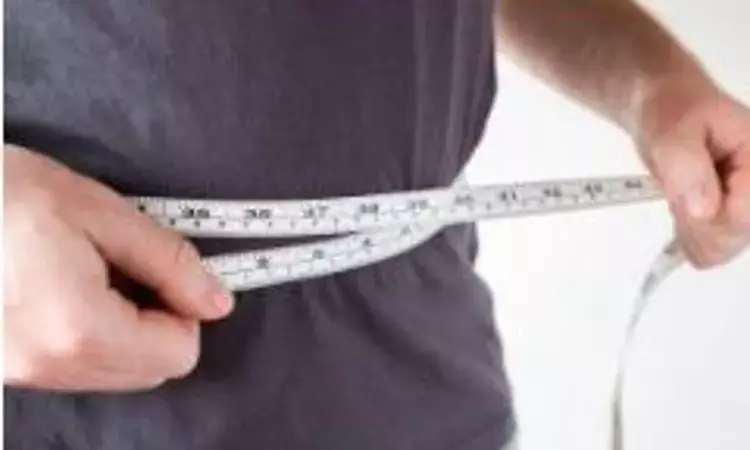- Home
- Medical news & Guidelines
- Anesthesiology
- Cardiology and CTVS
- Critical Care
- Dentistry
- Dermatology
- Diabetes and Endocrinology
- ENT
- Gastroenterology
- Medicine
- Nephrology
- Neurology
- Obstretics-Gynaecology
- Oncology
- Ophthalmology
- Orthopaedics
- Pediatrics-Neonatology
- Psychiatry
- Pulmonology
- Radiology
- Surgery
- Urology
- Laboratory Medicine
- Diet
- Nursing
- Paramedical
- Physiotherapy
- Health news
- Fact Check
- Bone Health Fact Check
- Brain Health Fact Check
- Cancer Related Fact Check
- Child Care Fact Check
- Dental and oral health fact check
- Diabetes and metabolic health fact check
- Diet and Nutrition Fact Check
- Eye and ENT Care Fact Check
- Fitness fact check
- Gut health fact check
- Heart health fact check
- Kidney health fact check
- Medical education fact check
- Men's health fact check
- Respiratory fact check
- Skin and hair care fact check
- Vaccine and Immunization fact check
- Women's health fact check
- AYUSH
- State News
- Andaman and Nicobar Islands
- Andhra Pradesh
- Arunachal Pradesh
- Assam
- Bihar
- Chandigarh
- Chattisgarh
- Dadra and Nagar Haveli
- Daman and Diu
- Delhi
- Goa
- Gujarat
- Haryana
- Himachal Pradesh
- Jammu & Kashmir
- Jharkhand
- Karnataka
- Kerala
- Ladakh
- Lakshadweep
- Madhya Pradesh
- Maharashtra
- Manipur
- Meghalaya
- Mizoram
- Nagaland
- Odisha
- Puducherry
- Punjab
- Rajasthan
- Sikkim
- Tamil Nadu
- Telangana
- Tripura
- Uttar Pradesh
- Uttrakhand
- West Bengal
- Medical Education
- Industry
Modest weight loss tied to significant improvement in NAFLD: claims study

According to reports from a recent study, even modest weight loss can effect clinically significant improvements in NAFLD, but greater weight loss is associated with greater improvements. Researchers have further highlighted that Treatment of NAFLD could be enhanced by integrating support for formal weight loss programs. The findings have been published in Metabolism - Clinical and Experimental.
Nonalcoholic fatty liver disease (NAFLD) is the most common liver disease worldwide with no specific treatment. Weight loss is the most effective therapeutic strategy in its management; however, there is no consensus on its specificsPrevious Trials show that weight loss interventions improve biomarkers of non-alcoholic fatty liver disease (NAFLD), but it is unclear if a dose-response relationship exists.
To evaluate the relationship between weight loss and nonalcoholic fatty liver disease (NAFLD), the authors conducted a meta-analysis of weight loss interventions, which included 43 studies with 2809 participants. Median follow-up was 6 months. Nine databases and trial registries were searched until October 2020. Single-arm, non-randomized comparative, or randomized trials of weight loss interventions (behavioral weight loss programs [BWLPs], pharmacotherapy, or bariatric surgery) in people with NAFLD were eligible for inclusion if they reported an association between changes in weight and changes in blood, radiological, or histological biomarkers of liver disease.
Data analysis revealed the following facts.
- For every 1 kg of weight loss, there was a 0.83-unit reduction in alanine aminotransferase, a 0.56-unit reduction in aspartate transaminase, and a 0.77% drop in steatosis assessed by histology or radiology.
- A dose–response relationship was identified with regard to liver inflammation, ballooning, and resolution of NAFLD or nonalcoholic steatohepatitis; there was limited evidence of a dose–response relationship with NAFLD activity score or fibrosis.
- Forty-three studies (BWMPs: 26, pharmacotherapy: 9, surgery: 8) with 2809 participants were included. The median follow-up was 6 (interquartile range: 6) months.
- The direction of effect was generally consistent but the estimates imprecise. Every 1 kg of weight lost was associated with 0.83-unit (95% CI: 0.53 to 1.14, p < 0.0001, I2 = 92%, n = 18) reduction in alanine aminotransferase (U/L), 0.56-unit (95% CI: 0.32 to 0.79, p < 0.0001, I2 = 68%, n = 11) reduction in aspartate transaminase (U/L), and 0.77 percentage point (95% CI: 0.51 to 1.03, p < 0.0001, I2 = 72%, n = 11) reduction in steatosis assessed by radiology or histology.
For full article follow the link:The Effect of the Magnitude of Weight Loss on Non-Alcoholic Fatty Liver Disease: A Systematic Review and Meta-Analysis Metab. Clin. Exp. 2020 Nov 28;[EPub Ahead of Print], DA Koutoukidis, C Koshiaris, JA Henry, M Noreik, E Morris, I Manoharan, K Tudor, E Bodenham, A Dunnigan, SA Jebb, P Aveyard
Primary source: Metabolism - Clinical and Experimental
Dr Satabdi Saha (BDS, MDS) is a practicing pediatric dentist with a keen interest in new medical researches and updates. She has completed her BDS from North Bengal Dental College ,Darjeeling. Then she went on to secure an ALL INDIA NEET PG rank and completed her MDS from the first dental college in the country – Dr R. Ahmed Dental College and Hospital. She is currently attached to The Marwari Relief Society Hospital as a consultant along with private practice of 2 years. She has published scientific papers in national and international journals. Her strong passion of sharing knowledge with the medical fraternity has motivated her to be a part of Medical Dialogues.
Dr Kamal Kant Kohli-MBBS, DTCD- a chest specialist with more than 30 years of practice and a flair for writing clinical articles, Dr Kamal Kant Kohli joined Medical Dialogues as a Chief Editor of Medical News. Besides writing articles, as an editor, he proofreads and verifies all the medical content published on Medical Dialogues including those coming from journals, studies,medical conferences,guidelines etc. Email: drkohli@medicaldialogues.in. Contact no. 011-43720751


